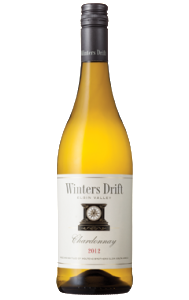Going Chard Crazy
Bare with me, I seem to be going through an Elgin infatuation as we … speak? It probably won’t pass, however I’ll most certainly move to another obsession next week that will keep me preoccupied for a little while. In this instance, I’ve been fortunate enough to taste a couple of their stunning Chardonnays over the last few weeks, and decided to stick my “aches-ridden” neck out for it as a variety (dramatic huh?).
Yes the severe Chardonnay bashing in protest of those heavily wooded over ripe wines was long overdue and consumers needed to send out a strong, solidified message; but the ever adapting and evolving wine makers (they hold a reverend place in my heart) have mostly listened and hit back with some jaw dropping muscle! Fair enough, you can affirm that you aren’t a fan of plank in a glass: but to write-off an entire variety because you think they only come in 2 x 4 sizes, is a lot ignorant, is it not?
Take a mere 3 examples from said hallowed ground whose cool climate is perfect for Chardonnay:
Winters Drift 2013

Half of this wine gets fermented in stainless steel tanks and inoculated with “store”-bought yeast. The other half is placed in French oak barrels (I suspect older barrels) and let to naturally ferment over 9 months. It further undergoes malolactic fermentation where the Malic acid (think green Granny Smith apples) is converted into Lactic acid (think milk, cream and butter) that turns down the acidity and offers that fatness.
The results are impressive. I picked up that ground nut character I associate with natural ferment, creamy vanilla and lemons on the nose. The palate had sweet apples, stone fruits and refreshing tangerine. Slight toasty, but definite balance.
Julien Schaal 2012

The grapes are actually sourced from Paul Cluver Wines. They too undergo both tank (about 60 % of them) and barrel fermentation. Old barrels are used that range from 900 to 300 litres in size; with the larger vessels having more subtle oak influence. The intention behind the mix is to keep the freshness and fruit from the tank component and add rounded more complex flavours from the barrel. None of this wine underwent malolactic fermentation.
I first picked up almonds and toast with a lemon peel character. Following through was tangerine, savoury salt and cold ham (which in my head together screams bacon!). There was great intensity matched with crisp acidity that lingered convincingly.
JH Meyer 2013

Sourced from 11-year-old vines, this wine is made completely naturally: meaning absolutely nothing was added to it; that is no yeast, nutrients or enzymes, with no filtering or fining (Find explanation of fining here) before bottling. A third of the grapes were fermented while still attached to the stems in a process known as whole bunch fermentation for 8 days. In this practice, the stems contribute tannins to the wines and promote oxygenation of the must (mixture of grape juice, skins, stems, seeds and pulp). The remaining grapes were pressed while still attached to the stems (known as whole bunch pressing… no surprise there), where the stems aid in the flow of the juice. Both components were then naturally fermented and aged in 500 litre barrels that had been used four times before (4th fill) for 10 months.
The nose was, for lack of a better word, “interesting”. Struggling to comprehend natural wines, I lacked the vocabulary to describe it other than being “savoury”. On the palate though, it truly came alive! I picked up lemon meringue that gave way to remarkable pure citrus and fleshy fruits. As if this wasn’t enough, the wine was mineral, rounded on the mid palate and astonishingly refreshing. The flavour integration was sheer elegance.
I concede, a sample of 3 is in no way a representation of a whole. However if just one location can produce outstanding and diverse expressions like these, what can an entire country come up with?



I am glad you enjoyed these wines Tom.i discovered the JH Meyer wines some few years ago and I fell in love with them.the idea of natural wine making is seen and tasted in his wines.
Winters drift,we got history together.when I first visited Elgin my main focus was to visit Paul Cluver ,oak valley ,Iona .and I later that day found myself at the train station and In front of me was Winters Drift wines and the love began.
Thanks to Sommelier,Austaralian born David Clarke for introducing me to the Julien Schaal wines .Yea! It’s on my wine list.
Thanks Cashias. I’m glad they meet your incredibly high standards.
Elgin wines are certainly getting noticed, to an extent because of the fine advert that Paul Cluver makes with his wonderful wines in Elgin!
Particularly Chardonnay`s out of the Elgin region are fantastic, but they have a way to go to beat the Hemel-en-Aarde Chard`s that simply rock!
Maybe two or three Estates in Stellenbosch can keep up, but Hemel-en-Aarde Valley certainly established themselves as the Chardonnay leaders in SA (and probably also their Pinot Noir`s….although I don`t drink PN)
And rightfully so; Hemel-en-Aarde have the impressive tenure coupled with the big names such as Hamilton Russell, Bouchard Finlayson, Ataraxia and Restless River, to name a few, that continue to produce top notch Chards year in and out.
However, considering the amount of fruit from Elgin going into outside farms (case in point the Boschendal Elgin Chard that’s sublimely Burgundian, in my opinion) and if the region can come together to promote themselves as Sauvie and Chard country, It might end happening sooner than we think.